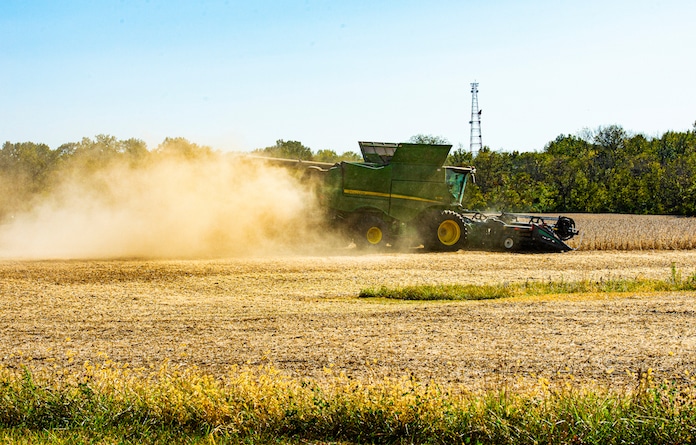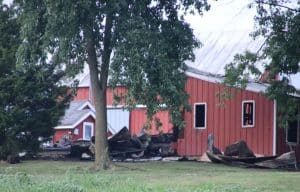Local bean harvest wrapping up

Soybeans are the final of three main field crops grown across Monroe County every year.
What are termed first crop beans have been harvested in billowing clouds of dust across the region in recent weeks, with some still awaiting harvest as we enter November.
The other two main area field crops, brought in earlier in the year, are wheat and corn.
Gateway FS Grain Division Manager Adam Parker told the Republic-Times that the soybean crop this year has been slightly better than average, but also slightly below expectations from early August when there were good temperatures and rain.
Dry weather that finished August and dominated September reduced expectations moderately, however.
The first crop beans were planted early in the spring. Most have been harvested by now, although some farmers still are waiting to get back into now-wet fields to finish this work.
Garrett Hawkins, who farms in the Bottoms, said harvesting had been going well under beautiful, pleasant conditions with dry fields permitting machinery to move easily and trucks to be driven all over the firm fields to swiftly take beans onboard from combines as their bins filled.
He estimated 30-40 percent of the area’s soybean crop remains to be combined for market.
Prices being paid for soybeans have elevated substantially in recent weeks, from about $8 a couple of months ago to current prices above $11 per bushel, Parker said.
It is unusual for crop prices to move up like that as harvest approaches. Parker attributed this to several factors, including the driest August on record across Iowa and Northern Illinois, which heavily damaged crops there.
He also said extremely dry weather across South America has severely cut prospects for soybeans there as summer arrives in the southern hemisphere.
Dry soils are making it hard to plant beans and to get them started, he said.
Finally, seeing looming crop shortage prospects in South America, Chinese interests are suddenly buying heavily from America’s fall harvest.
“It’s a supply and demand issue,” Parker said.
While the per bushel price looks great on paper, Glen Mueller – who farms some 1,100 acres on upland fields and 500 more acres in the Bottoms – was quick to balance that by pointing out farmers contract to sell their crops throughout the season. If they did so when soybeans were being sold in the $8 per bushel range, that’s the price they will receive.
Another planting of soybeans – called second crop beans – went in behind wheat crops as they were harvested in the spring.
They are the dark brown plants standing in many fields across the county still waiting to be harvested this fall.
The second crop beans can be harvested even after freezing, although if they freeze before they are mature that can cause the beans to remain undried and green in their centers, cutting their price substantially when they are sold.
What are soybeans used for?
First, animals eat 70 percent of them, or materials derived from them. Soybeans are ground into meal, and 64 percent of that product is used to feed poultry.
Pigs and cattle consume another 34 percent, and some is used in aquatic farming and for pet food.
Humans consume soybeans in tofu, protein for health food bars and soy milk. It is also used to make a substantial portion of vegetable oils and provides omega 3 oils and vitamin E.
Finally, it is a major part of the biodiesel industry, replacing oil-based fuels, and is even found in rubber vehicle tires today.
Field farming is an endless cycle. Many fields that yielded beans in recent weeks have now been planted with what is termed as winter wheat.
The rain and warm soil until last week have caused that crop to sprout and it is seen in low, smooth green carpets across county fields. It will fare well even under possible winter snow and be ready to grow and mature in spring when warmth returns.






